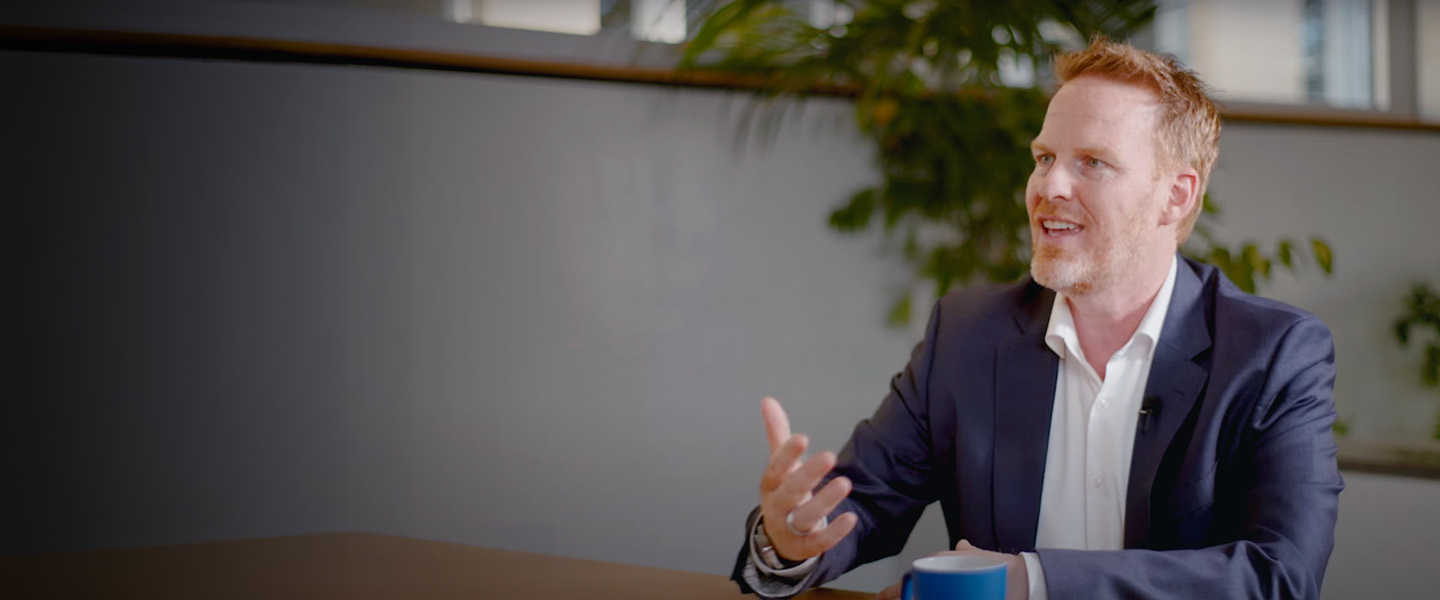Making a difference: driving financial returns while addressing the world’s most pressing societal challenges

This webinar, led by Professor Vanina Farber, elea Chair of Social Innovation and Sara Scaramella, Head of Private Equity, PG Impact Investments AG (PG Impact) appeared live on Wednesday, 8th July at 11AM CEST.
Crowding-in institutional investors is a critical challenge for structured investment funds that aim to tackle social problems.
How can investment funds attract these key sources of financial capital? What kind of impact metrics and financial return profiles are required to onboard institutional investors? How can a finance-first impact fund bring additionality to the impact landscape?
These are questions asked in this webinar, hosted by Professor Vanina Farber. Her guest, Sara Scaramella, discusses mobilizing institutional private capital at scale for deep impact. Sara Scaramella explained how PG Impact leverages third-party funds from a diverse institutional client base, such as foundations, family offices, private pension funds and banks/fund managers, to invest in products and services targeting underserved populations across the world.
PG Impact’s core activities focus on creating “deep-impact”; some 90% of the fund’s work relates to emerging markets. “Our only developed market investments at present are in affordable housing,” Scaramella explained to participants.
This mission is not without challenges, which Professor Farber and Scaramella discussed.
Challenges of bringing private capital at scale to impact investing
Scaramella explained that PG Impact seeks grow impact investing as an investable asset class for private investors across the board and intentionally diversifies its fundraising across foundations, banks, asset managers and even pension funds.
“We build our portfolios and products in ways that satisfy institutional investors,” she said, explaining that this was given institutional investors’ fiduciary duty to deliver market-rate return. In turn, this constraint means that PG Impact looks for investments that deliver market-rate returns.
That said, financial return requirements do not come with a trade off on social impact. Scaramella says, “We go as deep as possible in terms of target beneficiaries and have a strong focus on emerging markets.”
PG Impact also benefits from its association with Partners Group, which helped the impact firm build a reputation in the impact investing sector rapidly, as external fund-raising and the bulk of the investment activity only started in 2017.
Asked what is critical for an impact offering within an established traditional investment manager to succeed, Scaramella notes the importance of having a dedicated team or using an alternative incentive structure for the regular team.
Another challenge is how to find investment opportunities that are commercially attractive and impactful. Scaramella said the fund aims to invest in commercial solutions to societal challenges.
“The human needs are vast, with some 1 billion people worldwide lacking access to basic products and services and some 730 million people entering the working-age population, but these needs also create great market opportunities,” Scaramella explained.
The estimated market size of emerging consumers’ demand for goods and services is more than $7 trillion. “We look for companies that find commercially compelling solutions that address societal challenges.” That is, PG Impact investees are high-performing firms serving a social purpose in growth markets. Focus areas are, among others: healthcare, education, financial services, energy access, food and agriculture.
An example of one of the company’s investments is Project Nile in India, a hospital that required funds to expand and build a second facility. Scaramella explained: “We asked ourselves: ‘Can the hospital provide much needed services, affordably, to an underserved beneficiary?’ and found that they do: the hospital has offerings that carry different pricing and patient experience to cater for different patient groups — the low, middle and upper end – while providing the same high-quality healthcare to all.” Some 30% of their patients are low income.
The upshot? “They are much more profitable than any listed comparables and are exceeding our initial expectations, tracking well to deliver attractive private equity returns,” Scaramella explained.
Limitations of bringing private capital at scale to impact investing
On being a finance-first impact investor, Scaramella explained: “We are a market investor at the end of the day, so we price risk. There will be opportunities that we can price and transact on even without any risk mitigation from any other groups (the blended component).”
Scaramella continued, “But we have limitations; for instance, we will not do transactions that cannot happen at market rate. We are plugged in and collaborate well with other industry participants. If a deal is not for us, we will try to refer the deal on to another investor.”
Impact investing and COVID-19
Regarding the global pandemic, Scaramella is optimistic about the potential for impact investing to help catalyze relief and change. PG Impact’s portfolio, “has fared well despite the market turmoil; we have no major performance issues,” said Scaramella, responding to a participant’s question on COVID’s impact on company performance.
She explained: “Most of our portfolio is provision of essential products and services, which have not been too negatively affected. Conversely, some investments have even benefited such as our healthcare or food/agriculture businesses.”
Financial services investments, however, have been challenged by governmental lockdowns which have made loan collection difficult. “However,” said Scaramella, “in most places regulators have intervened to support financial inclusion and avoid panic in the market.”
The importance of portfolio diversification in impact investing
A diversified portfolio can help protect against crises. Scaramella said PG Impact takes a unique portfolio construction approach. She outlined three pillars of the firm’s approach: diversification, relative value and a framework for country risk management.
Diversification for PG Impact spans four areas: (1) asset class, (2) geography, (3) investment type and (4) sector. “Our fund provides investors with exposure to over 200 assets while the typical amount for a private equity fund is 10-15,” said Scaramella.
Benefiting from its global footprint and broad investment strategy ,PG Impact follows a relative value investing strategy, being able to select the most attractive risk-adjusted return opportunities across geographies, sectors and asset classes. Scaramella explained, “While we want diversification, we pick the best risk-adjusted returns.”
To mitigate macroeconomic and political risk, PG Impact applies allocation caps to individual countries based on third-party country risk ratings. “We have opted for relatively low caps. For example, a mid-risk country such as Mexico has an allocation cap of 8%,” Scaramella explained. “India, however, is an exception at 20% and this is due to relative value considerations. If we didn’t allow ourselves some flexibility in the country, we would be pushed to invest in other parts of the world that carry macro risk that in our view outweighs the concentration risk in India.”
Ultimately, PG Impact seeks to not just follow industry norms, but to deliver best in class impact products to help advance the overall impact industry best practice on portfolio construction, impact measurement and commercial due diligence.mPG Impact believes this commitment to excellence and innovation will ultimately drive more capital into the industry, helping place much-needed capital to help serve the world’s most pressing problems.
Research Information & Knowledge Hub for additional information on IMD publications

Business schools must champion values-led leadership as companies retreat from DEI. Now’s the time to stand firm and lead by example, says David Bach.

Despite policy and market headwinds, the clean energy transition is accelerating. Here are five key insights business leaders need to know in 2025.

Regional developers have tried and failed to emulate Silicon Valley’s VC-driven model for innovation. Detroit Entrepreneurship is following an alternative route.

Understanding the 4 types of responsible leader helps you blend styles, avoid pitfalls, and meet challenges while managing stakeholder expectations effectively.

CFOs must drive a financially disciplined way to manage environmental and climate risk amid growing push back against sustainability efforts.

Most senior leaders struggle with the decision to step down, often holding on long after their optimal departure date. Take this quiz to find out if you’re really ready – and read on for tips on managing the psychological transition. Most senior l...

Responsible for TIME magazine’s iconic covers, D.W. Pine explores his creative process and shares insights on how to cut through the noise and make an impact.

Geopolitical turmoil and its workforce impact demand a systems thinking approach from CHROs, argue IMD’s Katharina Lange and Simon Evenett.

AI is reshaping careers, but future-proof skills aren’t what you think. Vision, expertise, and deep knowledge - not hype - are key to success in an AI world.

This episode takes you behind the scenes of a recent gathering led by the World Business Council for Sustainable Development together with IMD, where David Bach sat down with two sustainability leaders.
Research Information & Knowledge Hub for additional information on IMD publications
in I by IMD
Research Information & Knowledge Hub for additional information on IMD publications
in I by IMD
Research Information & Knowledge Hub for additional information on IMD publications
in I by IMD
Research Information & Knowledge Hub for additional information on IMD publications
Research Information & Knowledge Hub for additional information on IMD publications
Research Information & Knowledge Hub for additional information on IMD publications
in I by IMD
Research Information & Knowledge Hub for additional information on IMD publications
Research Information & Knowledge Hub for additional information on IMD publications
in I by IMD
Research Information & Knowledge Hub for additional information on IMD publications
Research Information & Knowledge Hub for additional information on IMD publications

